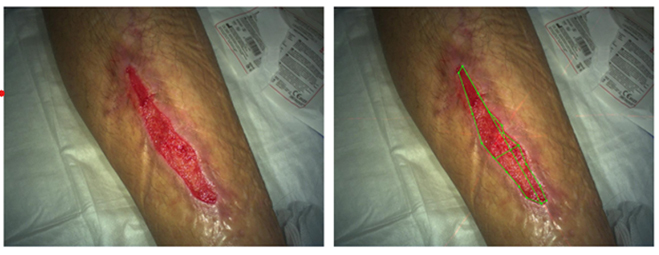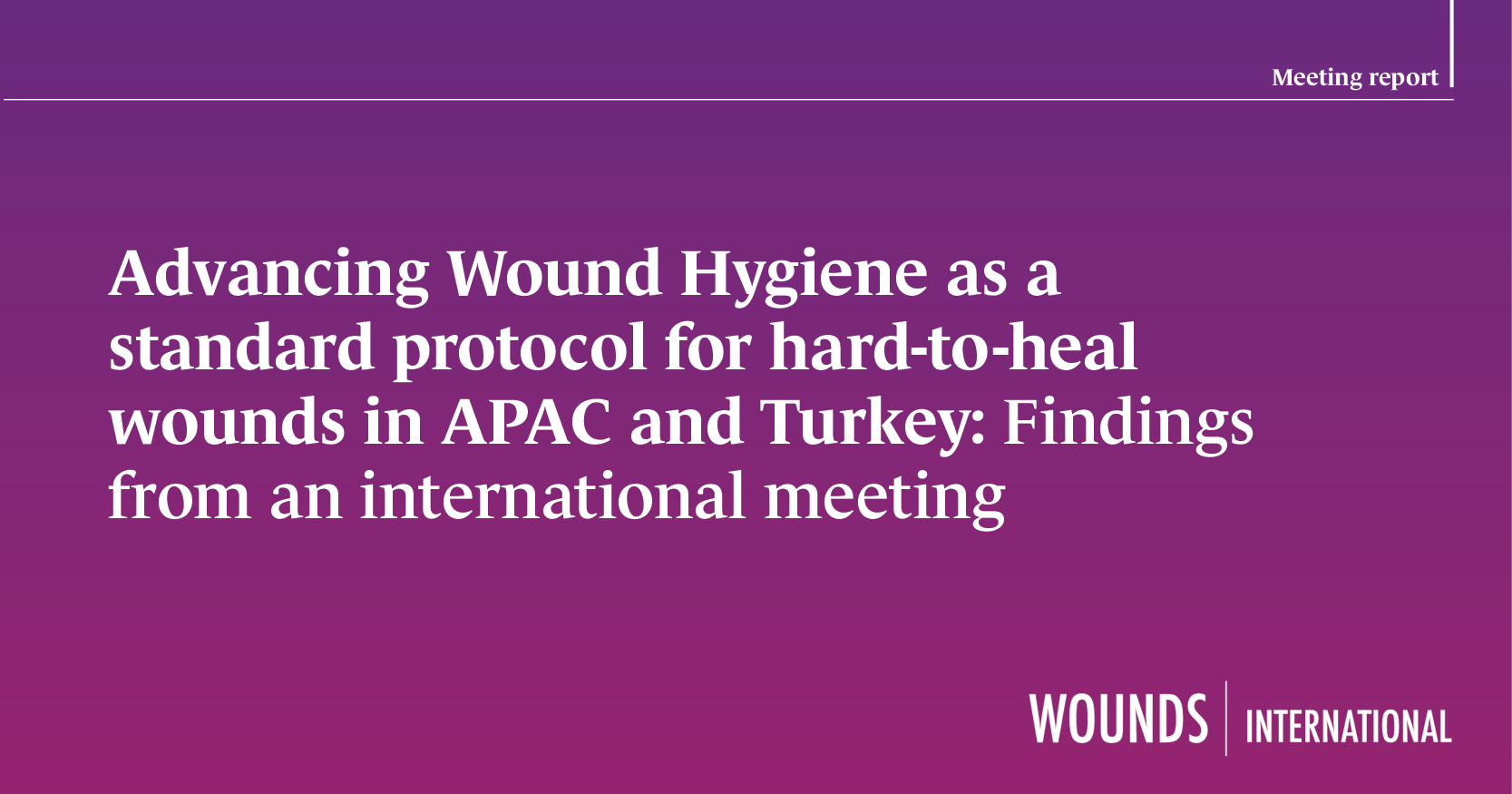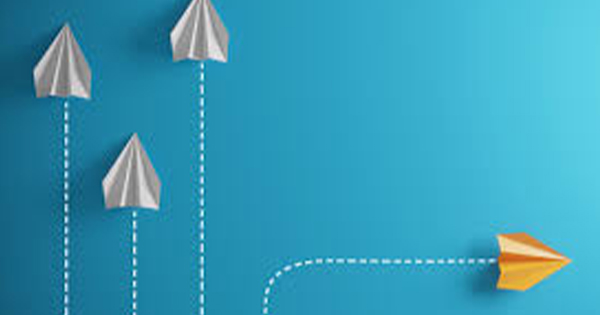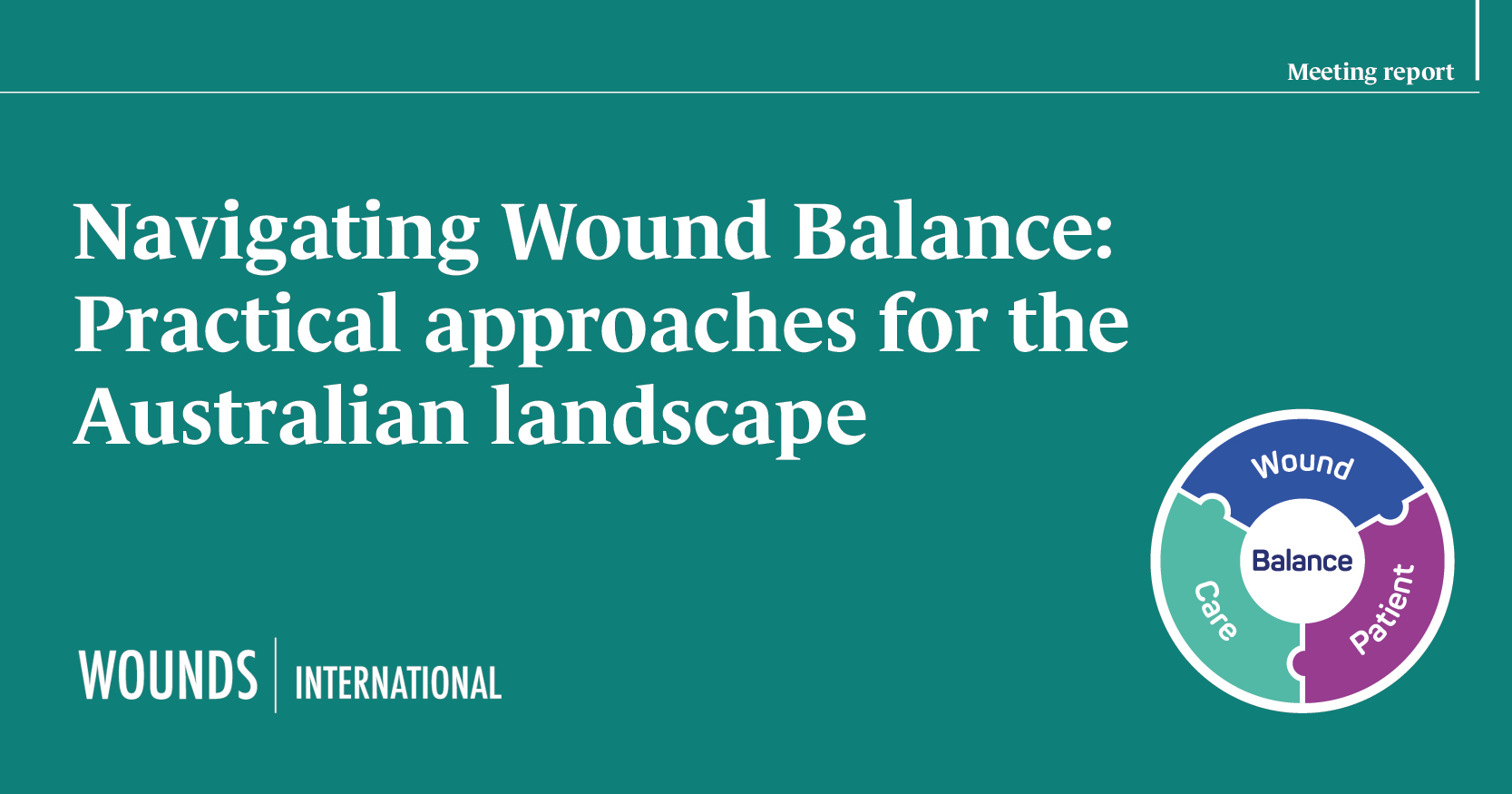This report summarises the proceedings of an industry-sponsored symposium (held at the European Wound Management Association Conference in 2024). An international panel of scientific and clinical experts presented research data on the mechanisms of action of negative pressure wound therapy (NPWT) and shared their clinical experiences of using a canister-based single-use NPWT system (CB-suNPWT).
Introduction
Over the past 20 years, NPWT has revolutionised wound care. In a survey ranking the top five innovations in plastic and reconstructive surgery (out of a list of 69 other innovations), NPWT placed fourth; in the ‘instruments/consumable products’ category, NPWT ranked as first (Asghari et al, 2023). NPWT is used to treat acute and chronic wounds of various aetiologies. Despite its widespread adoption, much confusion exists over the mechanisms of action, as well as the appropriate pressure settings and dressing configurations and their contraindications (Kairinos et al, 2014).
Since its introduction, new iterations of NPWT have been developed, such as single-use negative pressure wound therapy (suNPWT) systems which are relatively small, lightweight and powered by batteries. As these systems are no longer restricted by their weight and reliance on a mains electricity source, they have become a practical option in post-surgical and home care settings (Ciliberti et al, 2023).
Throughout their presentations, the panel addressed misconceptions surrounding the effect of NPWT on tissue pressure and perfusion, explained the biomechanical effect of suNPWT on the healing of open and closed incisional wounds and presented clinical experiences using Avance® Solo, a canister-based suNPWT system (CB-suNPWT).
Symposium proceedings
A Mölnlycke-sponsored symposium was held during the European Wound Management Association (EWMA) conference in London on May 1, 2024. The symposium was moderated by John Timmons (Corporate Medical Director; Former Clinical Nurse Specialist in Tissue Viability) and included presentations on the following:
- Biomechanics of NPWT and dressing interfaces (Professor Nick Kairinos)
- How can a single-use negative pressure system accelerate surgical & none-surgical wound healing and the role of the influence zone (Professor Amit Gefen)
- Clinical experiences of CB-suNPWT in the management of open wounds (Dr Marino Ciliberti)
Biomechanics of macro-deformation, tissue pressure and perfusion
NPWT is the topical application of an evenly distributed sub-atmospheric pressure (i.e., suction) to the wound bed and periwound skin via a foam or gauze dressing, an adhesive dressing or an occlusive adhesive drape to create a seal, and tubing which connects the dressing to a pump and fluid-collection canister (Normandin et al, 2021). NPWT facilitates wound healing through the removal of excess fluid, reduction of soft tissue oedema and bacterial load, as well as the stimulation of angiogenesis and granulation tissue formation (Normandin et al, 2021; Wounds International, 2018)
Multiple studies have included improved perfusion as an additional mechanism of action of NPWT. The proposed theory is that the negative pressure applied to the foam and adhesive dressing causes tissue pressure to drop immediately, creating a negative pressure gradient, which leads to a sharp increase in blood flow to the wound. Morykwas et al (1997) have suggested that this increase in perfusion is the cause of increased granulation tissue formation, having shown that at -125 mmHg, blood flow was four times superior. In the first presentation, Professor Nick Kairinos challenged this paradigm.
Recent studies have shown that, regardless of dressing configuration (circumferential, non-circumferential or cavity), NPWT causes tissue pressure to increase proportionally with increasing negative pressure, which is incongruent with increased perfusion (Kairinos et al, 2009a, 2009b, 2010).
Within the large body of evidence which supports an immediate increase in perfusion following NPWT, almost all the studies have used Laser Doppler, which — to measure tissue perfusion following NPWT — is intrinsically flawed. Laser Doppler is an arbitrary unit derived by multiplying the velocity and concentration of red blood cells (RBCs) within a given tissue volume (less than 1mm). Therefore, the greater the velocity of RBCs, the greater the immediate increase in perfusion. Within NPWT studies, the perfusion measurements are confounded by the compressive effect of negative pressure on the underlying tissue. This effect can be explained by the continuity equation in which a fluid in a steady state of flow will increase in velocity if the surrounding tube undergoes a reduction in diameter. As the diameter of the blood vessels is reduced due to the compressive forces applied in NPWT, these studies have likely overestimated the increase in perfusion despite partial occlusion of the blood vessels occurring (Kairinos et al, 2014).
Professor Kairinos and his colleagues have also demonstrated that perfusion immediately following NPWT decreases, particularly with circumferential dressings. Therefore, caution must be taken when treating patients with impaired vascularity, contradictory to previous suggestions that impaired vascularity is an indication for the use of NPWT (Kairinos et al, 2009a).
With these recent findings, clarity is required regarding the most appropriate wound dressing for a particular wound type. To understand which dressing configuration should be used, it is important first to understand the biomechanics within the NPWT-wound bed environment.
Suction pressure (i.e., negative pressure) generated by the vacuum pump creates a local positive pressure within the NPWT dressing due to unopposed atmospheric load. This atmospheric load causes foam contracture, which in turn compresses the underlying wound and periwound skin as the adhesive layer is simultaneously pushed down. An additional force present with the NPWT dressing-wound interface is the centripetal force generated by the foam as it contracts under compressive load, pulling the wound edges inwards.
Professor Kairinos explained that dressing configuration is dependent on the wound type and the stage of wound healing. For example, in deep cavitating wounds which require granulation tissue formation, it is recommended that foam should be used despite the centripetal force of foam contracture, which pulls the wound edges together and creates high pressures on the epithelialising edges. At this stage, there isn’t a high requirement to avoid potential ischaemia at the wound edges as granulation tissue is the main priority rather than epithelialisation. Foam should also be used if the aim is to reduce oedema, as the high pressures generated by both atmospheric load and centripetal force of foam contracture increase tissue pressure.
For shallower wounds where the requirement has shifted to epithelialisation, a multi-layer negative pressure dressing should be used. Unlike a traditional film and foam NPWT dressing, multilayer dressings are non-contractile and do not deform to the same degree as the traditional foam dressing. This translates to a loss of the contractile forces that aid in reducing wound volume but at the same time a change in the distribution of pressure where the energy transfer does not induce ischaemia in the wound margins, but rather stimulates cellular activity in the periwound leading to epithelial cell migration.
Effect of mechanical loading on closed incisional wounds
In the second presentation, Professor Amit Gefen explained that tissues must be in an optimal mechanical loading state over an appropriate time frame, as explained by the ‘Goldilocks principle’. If the skin is exposed to a high mechanical load over a short time frame, trauma occurs; and when exposed to a high mechanical load over a prolonged period (such as in immobile patients), pressure ulcers may occur (Bader and Worsley, 2018). Conversely, if mechanical loading is too low, cells do not receive the mechanical signals required to coordinate cell migration, proliferation and differentiation for tissue formation and remodelling.
In addition to facilitating the healing of open wounds, NPWT is also indicated for closed surgical incisions and has been shown to reduce rates of post-surgical complications, such as surgical site infections (SSI), seroma, haematoma and dehiscence, and has also been shown to improve scar quality (Wounds International, 2018; Orlov and Gefen, 2022).
Closed surgical incision sites are subjected to ‘higher than normal’ mechanical loads due to the formation of stress concentrations in the periwound skin surrounding the suture insertions, which diffuses sub-dermally into the adipose and muscle tissues. These tissue stresses may significantly affect wound healing by potentially causing ischaemia and negatively impacting the proliferation and migration of dermal fibroblasts into the wound bed. Computer-generated simulations, such as those generated by finite element analysis (FEA), can be used to quantitatively analyse these tissue stresses and determine the effect of NPWT on periwound loading, depending on the NPWT system parameters, such as the pressure level and dressing size, shape and materials.
Portable single-use NPWT (suNPWT) systems, particularly canister-based (CB) systems, have become an increasingly attractive option in postoperative care. They allow patients to remain mobile, thereby improving their quality of life as normal daily activities can be resumed. They also have a cost-benefit advantage over traditional NPWT systems as they require less intervention from clinical experts, leading to better clinical outcomes in a shorter healing time and thereby, reducing the required hospitalisation period (Orlov and Gefen, 2022). CB-suNPWT systems, such as Avance® Solo, deliver a greater (absolute) negative pressure level, which is consistent and continuous due to controlled fluid management technology. This technology allows excess fluid to be removed from the dressing continuously and consistently through the action of the integral pump. Canister-less (CL) systems, which rely solely on the absorption and evaporation of exudate from the dressing, are generally more sensitive to ambient conditions (i.e., to the room temperature and humidity, or the speed of the air), or to the nature of the clothing and bandaging (if any) that are applied over the NPWT dressing (Orlov and Gefen, 2022).
The evenly distributed negative pressure maintains a continuous joining force that pulls the wound edges together, which is important for relieving suture forces and alleviating the aforementioned tissue stress concentrations around the suture insertions. This, in turn, leads to a reduction of the loading levels within the periwound tissues surrounding the sutures, resulting in improved skin and subdermal perfusion and therefore, better wound healing and biomechanical quality of the repaired tissues (Orlov and Gefen, 2022).
A further mechanism of action of suNPWT systems is the generation of mechanical tissue deformations beyond the wound bed into the periwound tissues, to recruit fibroblasts in the direction of the increased dermal strains (Ciliberti et al, 2023). The effect of this mechano-stimulation on wound healing can be explained through the influence zone (IZ) theory developed by Professor Gefen. Within the context of NPWT, the IZ is a quantitative bioengineering performance measure of the distance from the wound edges along which a specific NPWT system can deliver effective mechanical stimulation into the periwound tissues (Gefen, 2022). The larger the IZ generated by a given NPWT system, the greater the number of recruited fibroblasts and myofibroblasts from the periwound. It is important to note that in order to maintain an effective IZ, continuous and consistent delivery of an appropriate level of negative pressure is required. Orlov and Gefen (2022) have shown that below 40mmHg, periwound stimulation is greatly reduced, and at 20mmHg and below there is a complete loss of the periwound stimulation.
Clinical experience of suNPWT on open wounds
In the final presentation, Dr Ciliberti discussed his clinical experience using NPWT and presented data from a preliminary assessment which focused on the effect of the Avance® Solo suNPWT system on wound area reduction.
In their clinical experience, Dr Ciliberti and his colleagues have observed that NPWT has the greatest improvement in wound bed condition within the first 2 or 3 weeks of treatment. After this point, there is little or no difference in the speed of healing whether the wound was treated with NPWT or other dressing types. To understand the mechanism of action of NPWT on improved wound healing within the first few weeks, wound edge biopsies were performed to study the histological progression. This study was performed obtaining four biopsies at a distance of one week from each other.
The results showed that 14 days following the application of NPWT, cellular replication had improved, and neo-angiogenesis could be observed. However, after three weeks, cellular replication had significantly reduced, while an increase in collagen type 1 product was apparent. Similar results supporting improved microcirculation following NPWT were obtained via Doppler echocardiography. These findings support the observation that NPWT has the greatest impact within the first two weeks of treatment and suggest that the mechanisms of action behind this improvement are increased cellular replication and increased perfusion due to angiogenesis rather than a decrease in tissue pressure, as previously thought.
To practically assess the effectiveness of suNPWT systems for open wound healing, five patients with different wound aetiologies were treated with suNPWT (Avance® Solo) over a 4-week period. The wound area (cm2) and percentage of wound area reduction (%) were assessed weekly [see Boxes 1-5]. Results from all five cases further support the observation that regardless of wound aetiology, NPWT has the greatest impact on healing within the first few weeks of treatment. An additional finding was that wound area reduction was more effective compared to advanced dressings; this was observed in Case 4 [Box 4] and Case 5 [Box 5].
Dr Ciliberti concluded his presentation by saying that the cases presented proved the power and pressure effectiveness of suNPWT, CB-suNPWT further facilitates wound healing by avoiding maceration, wound management was more effective compared to other types of treatment, patient comfort was improved, and perfusion was increased via neo-angiogenesis. He additionally briefly considered the economic benefits of suNPWT. Introducing Avance® Solo into his own NPWT platform has led to increased savings compared to traditional NPWT systems. When traditional NPWT was substituted with CB-suNPWT for 1 week, a cost saving of 12% was observed, thereby increasing the budget for patient treatment. Similar findings were found over the last 4 years, as the pharmacology department at his hospital has observed a 17.3% increase in the number of patients treated and a 15.2% reduction in costs.
Discussion
Negative pressure wound therapy is known to be effective in treating a wide range of wound aetiologies, however, there remains misunderstandings as to the mode(s) of action that may lead to incorrect or suboptimal use. For example, contrary to the common perception that NPWT decreases tissue pressure leading to an immediate increase in perfusion, recent studies have shown that tissue pressure increases, leading to a decrease in perfusion with ischemia occurring at the wound edges. Perfusion increases gradually over time; however, this is due to the stimulation of angiogenesis induced by NPWT.
Further, traditional NPWT dressings that combine a thin film and foam to fill the wound cavity are proven very effective in reducing wound volume through contraction and in stimulation of granulation tissue, but at the same time do not stimulate the migratory cellular activity in the periwound necessary for reepithelialisation. While in comparison multilayer dressings do not introduce contractile forces, however, pressure is distributed such that in addition to transferring energy to the wound, mechanical stimulation also occurs in the periwound tissues. This mechanobiological mode of action results in the recruitment of cells responsible for reepithelialisation, facilitating wound area reduction and closure.
Conclusion
In summary, through improved understanding of mode(s) of action, differences between various NPWT system presentations and how they influence healing, it is possible to realise more effective clinical and economic outcomes.





